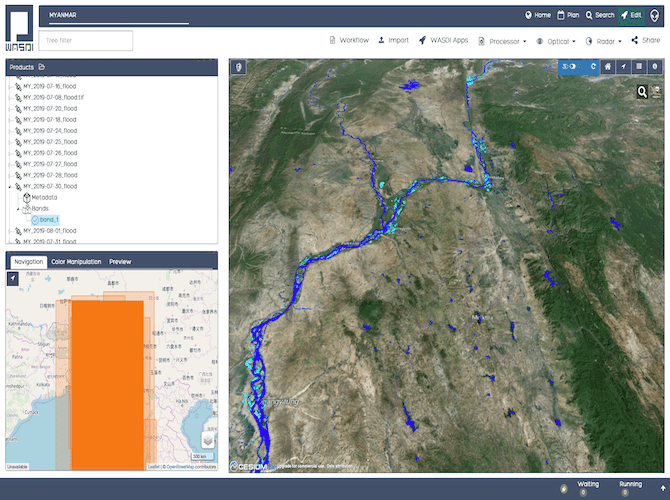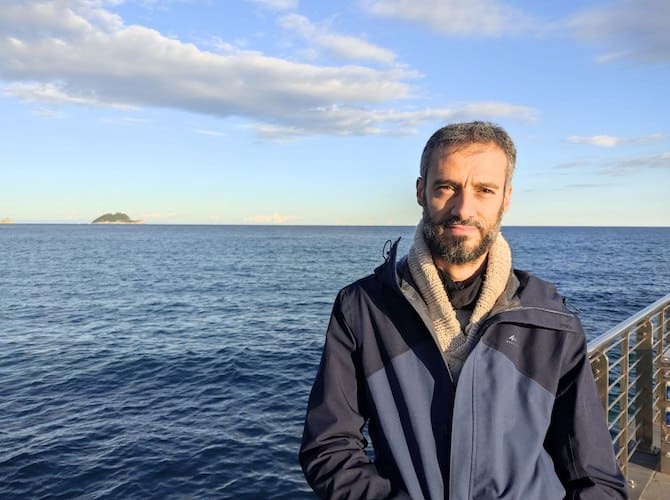In 2022, extreme weather events caused by man-made greenhouse gas emissions caused more than 10,000 deaths and incurred an estimated $280 billion in global damages, according to the UN. This startup is examining ways Earth observation can help mitigate against extreme weather events.
Devastating floods in Australia, Bangladesh and South Africa, scorching temperatures leading to rampant wildfires throughout the Mediterranean and water restrictions in Italy are a few of this year’s climate change red flags. The situation can seem bleak but for Luxembourg tech startup Wasdi, it is an opportunity to use their skills for good.
A spin-off from the Luxembourg Institute of Science and Technology with Italian firm Fadeout Software and Luxembourg startup RSS Hydro, Wasdi grew out of a collaboration between Fadeout and Italian civil protection and environmental monitoring agency the CIMA Foundation.
Once exposed to the world of Earth observation, we found that there were some issues preventing researchers and companies from exploiting the great potential of the satellite images, and in particular of the data from the Copernicus program satellites,” explains Wasdi business development officer Cristiano Nattero.
“I was telling a colleague that I was going for a hike and he said that in the future before going for a hike, we’re going to look at the fire forecast, just as we would a weather forecast now. I hope he was exaggerating but it’s not so far from the truth.”
Cristiano Nattero, Wasdi business development officer
Despite extensive European Commission investment in data information and access services, specialised clouds for researchers to access data and computational power, the existing infrastructure requires a certain IT skillset to add an algorithm for detecting fires or floods, for instance.
Nattero says: “Wasdi is a platform that helps experts in Earth observation turn their algorithms into a service in the cloud. Basically, we help experts concentrate their brains on the parts that have the most value and we get rid of the technicalities for them.”

The tool is so seamless that Nattero jokes most of their best customers, which include government organisations and civil protection departments, are not even aware that the images they use come through Wasdi.
The technology, which was first developed in 2016, is constantly evolving to serve the differing needs of clients, notably in the insurtech and energy sectors. Wasdi’s best customers, however, are the World Bank and the Asian Development Bank. Its first project which brought the technology to market, was with the World Bank to develop an insurance policy model based on the number of people affected for countries to against the financial risks associated with floods. The project began focusing on Laos, Cambodia, and Myanmar but has since expanded to other countries in South East Asia.
“They use the best available technology, which is based on satellite observations. On Wasdi we run the algorithms for mapping the floods. We cross validate the maps against the simulation models,” Nattero says, adding: “And then we calculate the number of people involved, using state of the art technology.
Financed by its founders, the LuxIMPULSE programme, as well as funding from calls for tender, the startup was founded in Luxembourg but has a committed team scattered across Europe. Nattero, who is based in Genoa, Italy, is excited by the potential that fire, flood, pollution and drought mapping offers. “Once fires are detected, then counter measures can be taken,” he says.
Meanwhile, one of Wasdi’s partners is analysing long-term satellite data to reverse engineer wildfires to predict with greater accuracy if a fire will break out and inform governments. Eventually, such applications could be made available to the public.
Nattero says: “I was telling a colleague that I was going for a hike and he said that in the future before going for a hike, we’re going to look at the fire forecast, just as we would a weather forecast now. I hope he was exaggerating but it’s not so far from the truth.”
